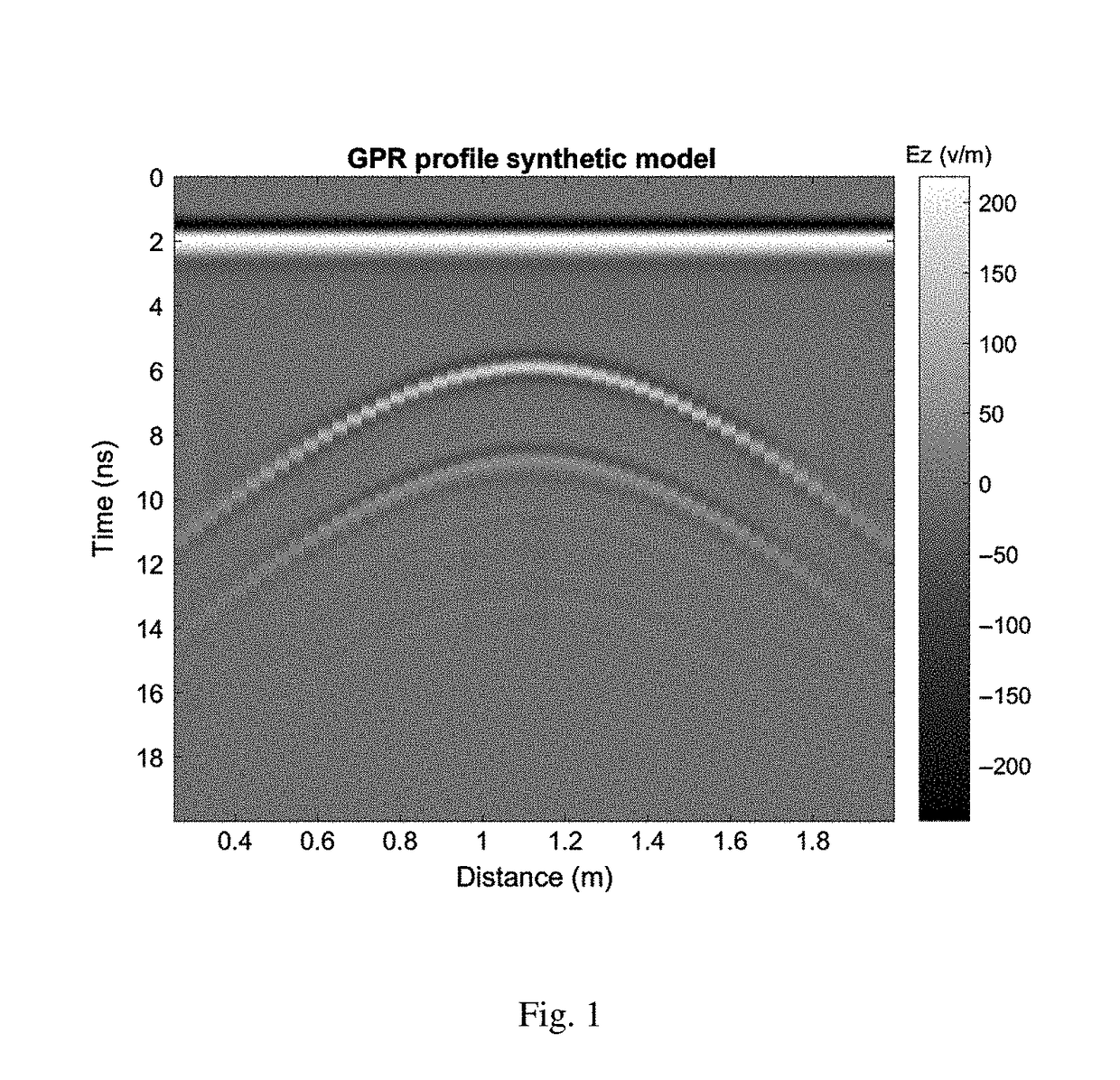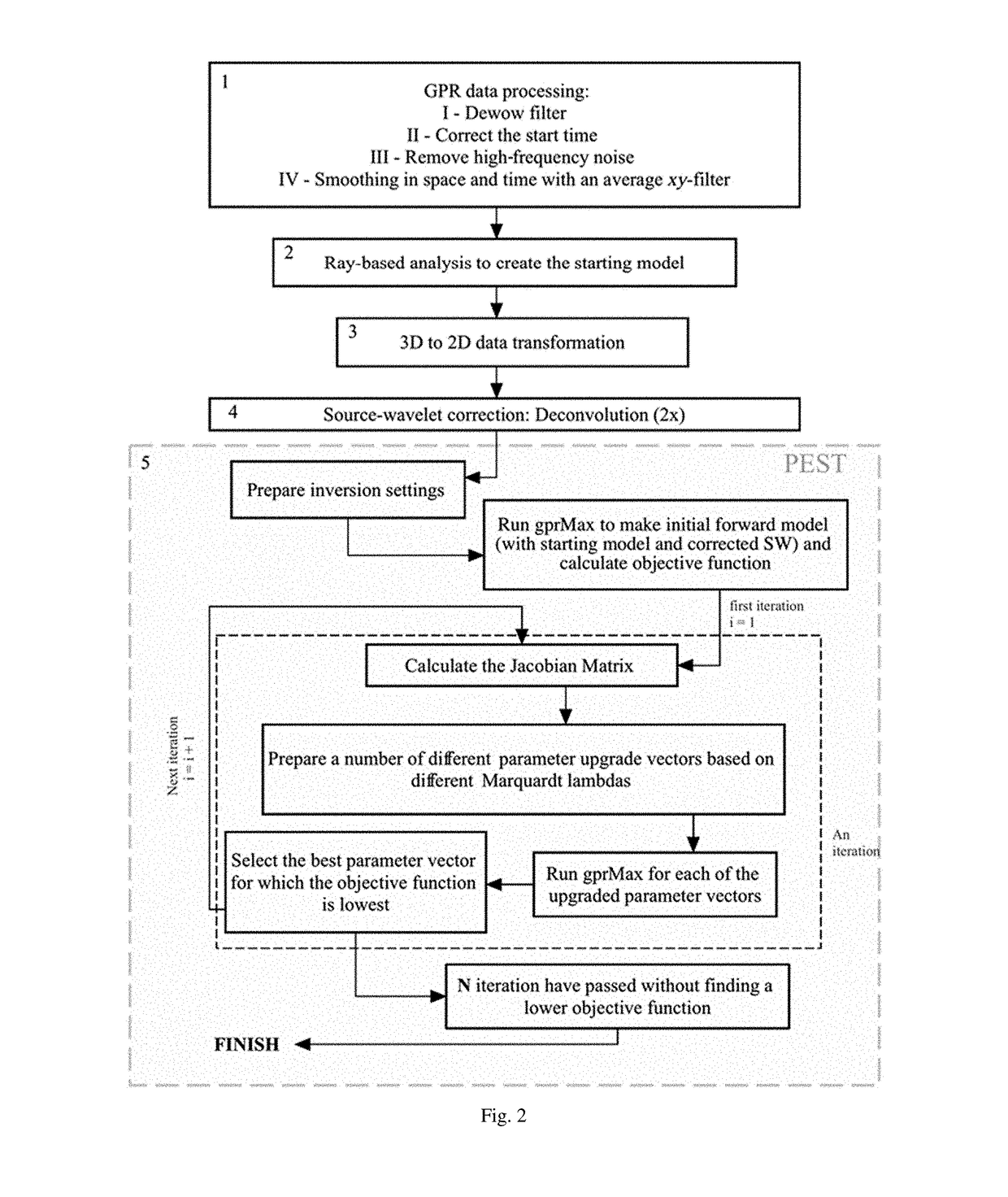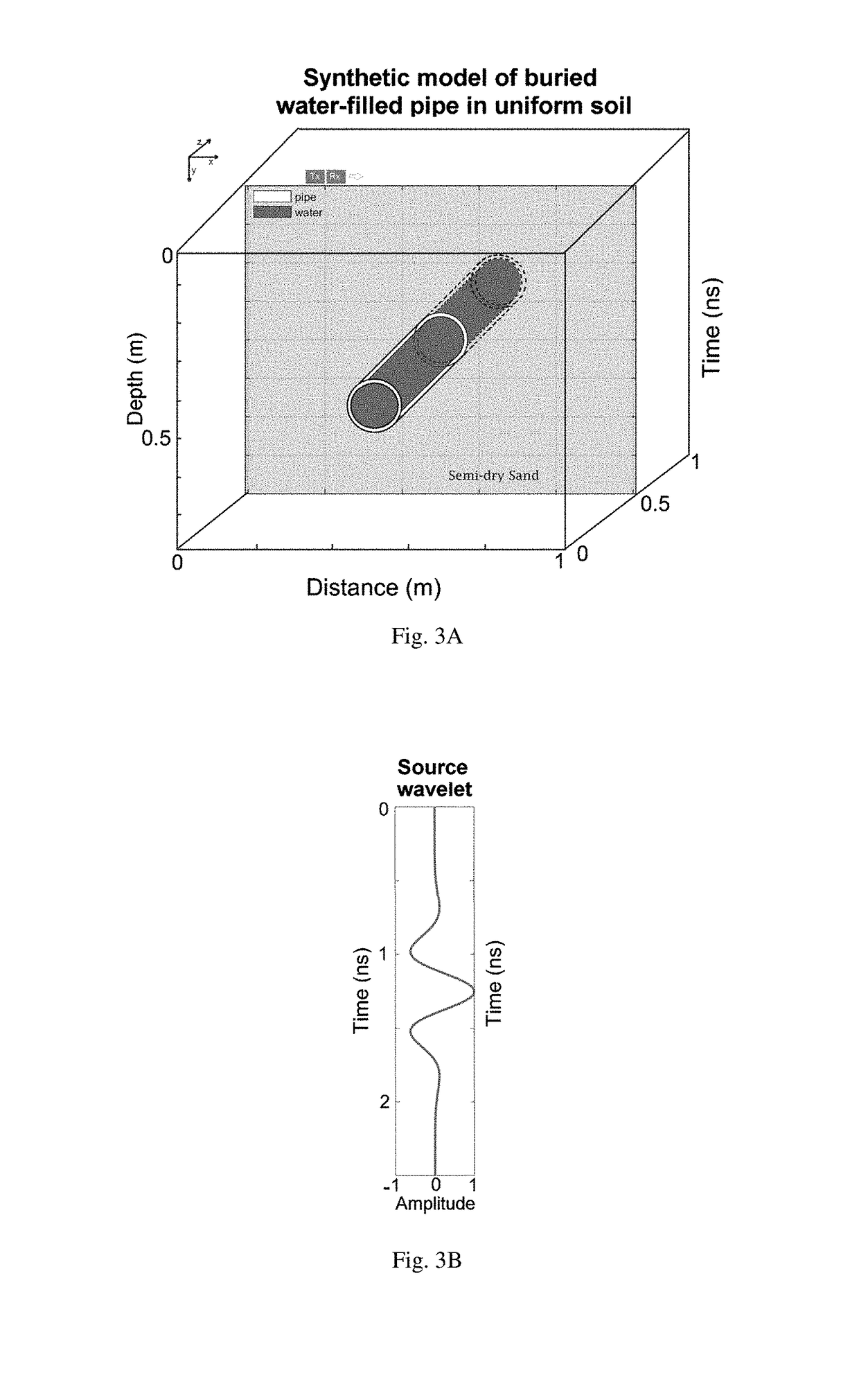Precise infrastructure mapping using full-waveform inversion of ground penetrating radar signals
a technology of infrastructure mapping and full-waveform inversion, applied in the field of ground penetrating radar, can solve the problems of increasing the risk of damaging existing utilities, insufficient information for simply detecting pipes at a given location, and insufficient records, so as to achieve accurate characteristic data and accurate estimate of the size of underground objects.
- Summary
- Abstract
- Description
- Claims
- Application Information
AI Technical Summary
Benefits of technology
Problems solved by technology
Method used
Image
Examples
case study 1
[0110] Water-filled Pipe
[0111]After the pipe was filled with water, as illustrated in FIG. 7, a grid of 15 parallel profiles was acquired, with 5 cm spacing between profiles (a subset is shown in FIG. 8). All profiles were run in a north-south direction, perpendicular to the pipe that was laid in an east-west direction. A Mala-ProEx system with 800 MHz shielded antennas was used. The spacing between traces along each profile was set to 8.5 mm and was controlled by an odometer wheel that was calibrated on site. The 80 traces centered on the hyperbola were selected to use in the inversion process. The water-filled pipe produced sharp hyperbolas in all the GPR profiles.
[0112]For a water-filled pipe, distinct reflections from the top and bottom of pipe are anticipated if the pipe diameter is greater than approximately half the radar wavelength. For this scenario, a wavelength of approximately 4 cm was expected; the pipe diameter of 7.6 cm is almost twice this value. Clear hyperbolas wer...
case study 2
[0123] Air-filled Pipe
[0124]On the same day that the pipe was buried, GPR profiles were collected using the 800 MHz antenna with the same settings as the previous section, but the pipe was empty. An air-filled pipe should produce weaker reflections and a shorter time gap between the upper and lower returns. Presumably, also the sand covering the pipe was less uniformly compacted and drier on the day of burial than six weeks later, and thus more “background noise” and a longer incoming wavelength was expected in this case. These factors combine to make the FWI in this case more challenging, designed to illustrate the efficiency of this technique in a more complex case.
[0125]A GPR profile (FIG. 13) was selected for the inversion procedure at the same location of the inverted profile in case study 1. Comparing FIGS. 9 and 13 illustrates the expected effects of water versus air and soil compaction. The air-filled pipe produces less pronounced and overlapping diffraction hyperbolas. Ther...
PUM
 Login to View More
Login to View More Abstract
Description
Claims
Application Information
 Login to View More
Login to View More - R&D
- Intellectual Property
- Life Sciences
- Materials
- Tech Scout
- Unparalleled Data Quality
- Higher Quality Content
- 60% Fewer Hallucinations
Browse by: Latest US Patents, China's latest patents, Technical Efficacy Thesaurus, Application Domain, Technology Topic, Popular Technical Reports.
© 2025 PatSnap. All rights reserved.Legal|Privacy policy|Modern Slavery Act Transparency Statement|Sitemap|About US| Contact US: help@patsnap.com



